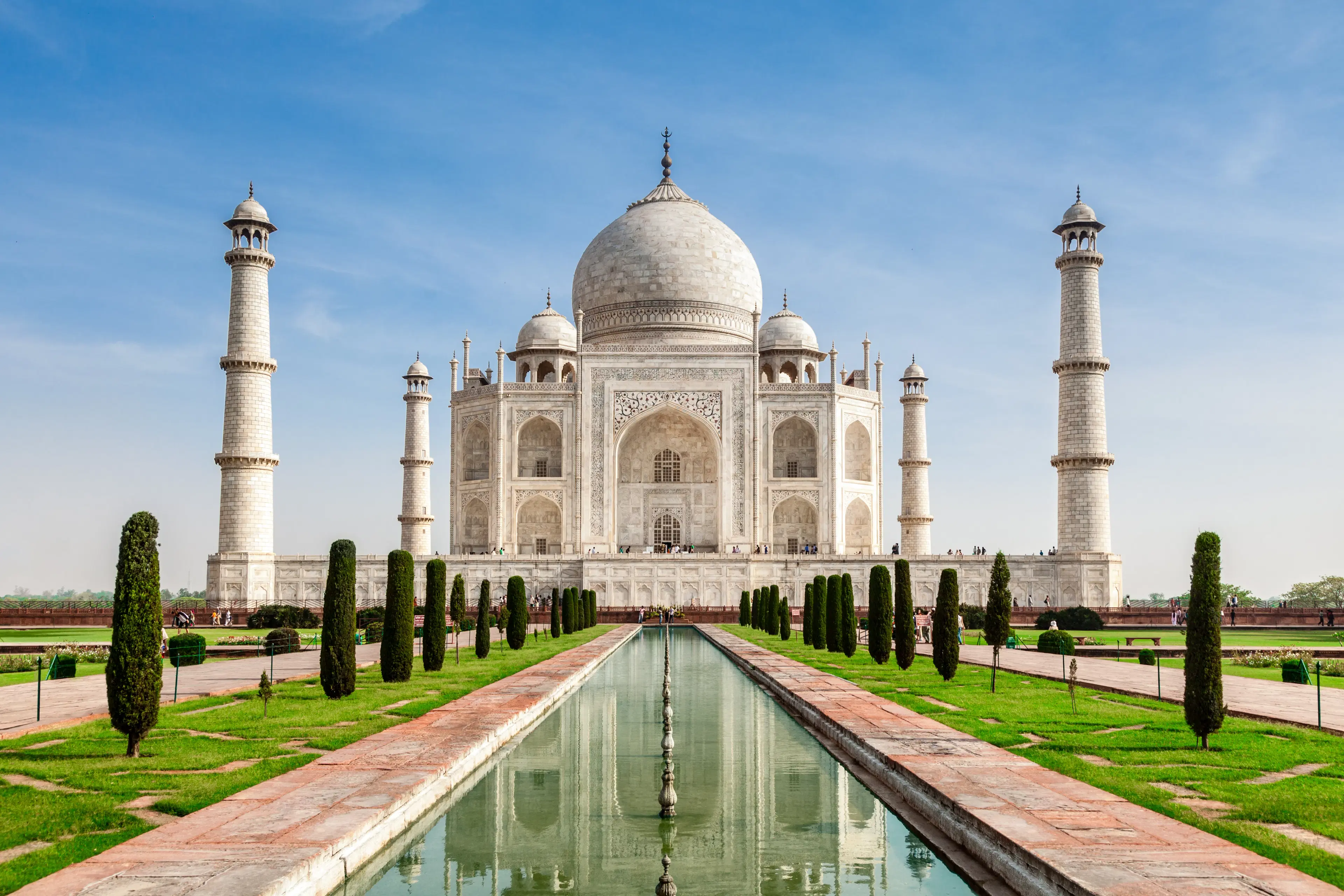
Flights
•06 min read

India's landscape is a living tapestry of culture, history, and nature, woven together through centuries of artistic expression and architectural marvels. With a record of over 40 UNESCO World Heritage Sites, this vast country is a treasure trove of ancient monuments, unique natural phenomena, and cultural hubs that tell stories of legacy, resilience, and tradition. In this post, we explore the top 10 world heritage sites in India that continue to inspire travelers and history enthusiasts alike.
UNESCO World Heritage Sites are recognized for their cultural, historical, and natural significance. In India, these sites are more than ancient ruins or scenic landscapes; they are the cornerstone of our cultural identity. They reflect the ingenuity of our ancestors and preserve many traditions that have been passed down through generations, inviting travelers to step into a past rich with art, architecture, and customs.
From the majestic brilliance of Mughal architecture to the intricate carvings of ancient temples, India’s collection of heritage sites boasts a unique blend of natural beauty and cultural heritage. This diversity has earned the country a distinguished spot on the global map, helping both locals and visitors appreciate the splendor and historical depth that each site carries.
The Taj Mahal, often hailed as the crown of palaces, stands as a beacon of eternal love. This iconic mausoleum enchants with its graceful symmetry, intricate marble inlay, and the rich narrative of Shah Jahan and Mumtaz Mahal. A symbol of both architectural brilliance and poignant romance, this monument invites travelers to immerse themselves in a sublime blend of beauty and history.
Known as the Pink City, Jaipur seduces visitors with its vibrant energy and regal charm. Its urban planning, supported by landmarks like Hawa Mahal and the Amber Fort, transports you to an era of valor and grandeur. Nawabs and royalty have left behind stories in every corner, enticing anyone who wishes to explore this living museum of art, tradition, and warm hospitality.
The Ajanta and Ellora Caves are mesmerizing collections of ancient rock-cut architecture and sculptures. These caves illuminate the evolution of Buddhist teachings and depict the serene narrative of a culture that celebrated art and spiritualism. As you wander among these hallowed chambers, you'll realize that these cave temples are not only monuments to faith but also sanctuaries of ancient wisdom and art.
Nestled amidst a surreal boulder-strewn landscape, Hampi is a city of ruins that speaks of the grandeur of the Vijayanagara Empire. The majestic Virupaksha Temple, the intricate Vittala Temple, and the famed Stone Chariot invite travelers to explore ancient history amid stunning natural backdrops. This UNESCO site is a blend of art, history, and nature poised to inspire every wanderer and planner who dreams of exploring time-worn tales.
Home to the elusive one-horned rhinoceros, Kaziranga National Park offers a refreshing break from the bustle of city life. Its rich biodiversity and sprawling grasslands make it a paradise for nature lovers and wildlife enthusiasts. A safari here is an immersive experience into the heart of India’s wild landscapes, where every creature and every rustle in the tall grass paints a picture of conservation and natural splendor.
The Sun Temple at Konark is a masterpiece that showcases the brilliance of Kalinga architecture. Designed as a chariot dedicated to the Sun God, its intricate carvings and detailed sculptures represent the pinnacle of artistic expression. The temple not only serves as a reminder of our astronomical and religious past but also stands as a beacon of human creativity and precision.

Bodh Gaya, where Lord Buddha attained enlightenment, is a sacred pilgrimage destination that radiates tranquility and spiritual depth. The Mahabodhi Temple Complex, with its ancient Bodhi tree and serene atmosphere, is a potent reminder of inner peace and profound wisdom. This heritage site draws millions of seekers of knowledge and peace, making it a cherished destination for both the young wanderer and the seasoned planner.
The Red Fort in Delhi is a magnificent symbol of India's storied past and its revolutionary spirit. Standing as a testimony to Mughal opulence and strategic brilliance, the complex is renowned for its remarkable architectural design and vibrant historical narratives. The evening Light and Sound Show enriches the visitor's experience, linking the past with the present in a mesmerizing display of art and history.
The Sundarbans, a sprawling mangrove forest, is a testament to nature's resilience and wonder. This UNESCO natural heritage site is known for its intricate network of tidal waterways, islands, and a dynamic ecosystem that harbors the majestic Bengal tiger. Eco-tourism initiatives here emphasize sustainable travel practices, protecting both the environment and the local communities that depend on these natural resources.
The Khajuraho Group of Monuments is celebrated for its architectural mastery and intricate erotic sculptures, a vivid portrayal of the Chandela dynasty’s artistic creativity. Each temple is a refined blend of structural ingenuity and aesthetic allure, placing Khajuraho among the best cultural sites in India. As you explore these ancient stone stories, you feel a deep connection to the artistry and emotions that have transcended time.
Did You Know? The First UNESCO Site in India
Did you know that the Ajanta Caves were the first site in India to be declared a UNESCO World Heritage Site in 1983? These caves, dating back to the 2nd century BCE, are a timeless celebration of ancient Indian art and culture.
Heritage sites are living textbooks that narrate the vibrant stories of India's diverse cultural roots. Visiting these sites allows you to immerse yourself in traditions that have shaped the nation, thus fostering a deeper understanding of the cultural nuances that define us as Indians.
Travel to these iconic locations does more than just satisfy wanderlust—it fuels the local economy. Authentic interactions with local artisans, guides, and small businesses enhance your journey while uplifting communities through tourism-driven growth.
Heritage tourism plays an essential role in preserving sites for future generations. The funds generated through tourism help maintain these monuments, ensuring that the legacy of every stone, sculpture, and pathway endures, inviting future travelers to experience and learn from them.
Each heritage site in India offers its own charm depending on the season. Cultural sites often shine in the cool embrace of winter, while wildlife parks like Kaziranga come alive during the milder summer months. Choosing the right time can enhance your experience, blending comfort with optimum sightseeing opportunities.

A smooth visit starts with a bit of planning. Booking tickets in advance, hiring knowledgeable local guides, and respecting the heritage site rules ensure that your journey is enriching and hassle-free. Tata Neu Travel premium flight bookings with Air India and Air India Express offer reliable connectivity to these gems, coupled with exceptional services. For added security during travel, consider trip insurance options like FlyCan and FlyNxt (*T&C apply). Such services let you embrace spontaneous adventures without worrying about last-minute rescheduling or high cancellation charges.
As you explore these historical and natural wonders, it's essential to travel responsibly. Embrace eco-friendly practices such as minimizing waste, respecting local habitats, and supporting community-driven tourism initiatives. Sustainable tourism ensures that these sites continue to inspire awe in the hearts of future travelers.
Your journey with Tata Neu Travel is made even sweeter with integrated loyalty rewards. Earn NeuCoins on every booking, whether it's for a flight or hotel stay. With each NeuCoin equating to a ₹1 saving, you unlock exclusive member deals, personalized recommendations, priority check-in, and even lounge access on select flights. These rewards make your travel experiences not just memorable but also economically sensible, enhancing every step of your journey.
The top 10 heritage sites include the Taj Mahal, Jaipur City, Ajanta and Ellora Caves, Hampi, Kaziranga National Park, Sun Temple, Mahabodhi Temple, Red Fort, Sundarbans, and Khajuraho Group of Monuments.
Currently, India boasts over 40 UNESCO World Heritage Sites encompassing cultural, natural, and mixed categories.
India currently has 40 UNESCO World Heritage Sites. There isn’t a 43rd site as of now.
Some natural sites include Kaziranga National Park, Sundarbans, Keoladeo National Park, Manas Wildlife Sanctuary, Nanda Devi and Valley of Flowers National Parks, Western Ghats, and Khangchendzonga National Park.
Maharashtra leads with several notable sites such as the Ajanta and Ellora Caves along with other cultural gems.
Exploring India's UNESCO heritage sites provides a window into the soul of this nation. Each site is a celebration of the past, a beacon of resilience, and a source of inspiration for the future. These monuments and natural wonders are a testament to the timeless beauty of Indian culture and history. By choosing heritage tourism, you not only experience unparalleled beauty and historical insights but also contribute to the preservation of India’s rich legacy. As you plan your next journey with Tata Neu Travel, let these iconic sites be your guide to an enriching travel experience filled with luxury, comfort, and the joy of discovery.
With Tata Neu's comprehensive travel solutions—offering premium flight bookings and exclusive loyalty rewards—every trip becomes a seamless, rewarding experience. As you wander through the timeless corridors of India's past, remember that each journey enriches your soul and brings you a step closer to understanding our illustrious heritage.